
Tech to Tech
- Subject: Engine cranks but won’t start
- Vehicle Application: 1993 Toyota Corolla 1.6L
- Essential Reading: Diagnostician
- Author: Brian Manley
Before you accept a job, be sure to get the whole story
When I said, “Sure, bring the car in; I’m certain we can fix it,” I had no idea what I was getting myself into. What had started as a “cranks, but no start” turned into the following story from the customer once the vehicle – a 1993 Toyota Corolla 1.6L – had rolled off the flatbed at our shop:
- Car purchased from a local high school in “as-is, not-running” condition.
- Car had been sitting for a long time.
- Customer is “mechanically minded,” so he purchased a pile of used parts from local salvage yards, including an electronic control unit (ECU), distributor with both pickup coils, ignition coil and igniter assembly, an extra igniter assembly, EFI relay, main relay and fuel-pump relay.
- Customer had substituted the aforementioned parts in and out of the car in an attempt to get ignition spark.
- Customer had taken the dash out of the car, exposing the “guts” (I was actually happy about this).
Once I had successfully resisted the urge to flag down the tow-truck driver and have him pull back the car, I started my diagnosis.
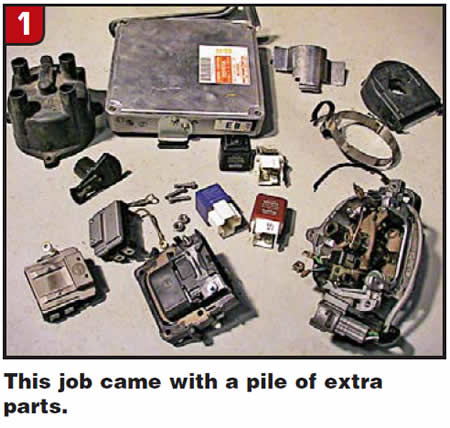
My first job was to confirm the concern, and the car was actually in no-crank condition. When the battery charged up a bit, I confirmed the crank, but no start. With the hood open, I performed a visual inspection and found all the telltale signs of a car that had been sitting (perhaps in a field) for a long time. Spider webs filled all the space from engine to firewall, and spiders had even set up webs in the wheel wells. I was shocked when I found several live spiders, and downright scared when I saw a red hourglass on the belly of a jet-black one. I now had a brand-new critter to add to my list. Just when you think you’ve seen it all …
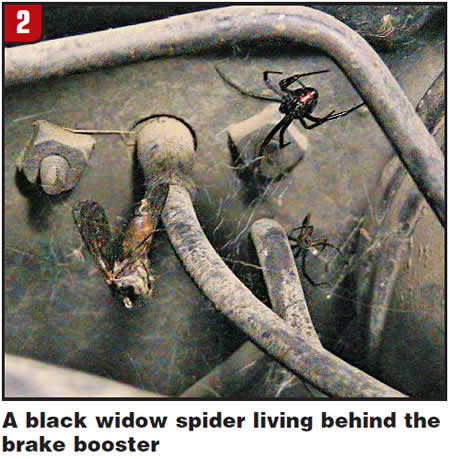
A quick check of spark and injector trigger revealed no spark or trigger while cranking. But once I had cranked the engine a few times, I noticed there was a brief spark when I bumped the starter, and one or two when I released the key from the “crank” position. However, there was nothing while cranking.
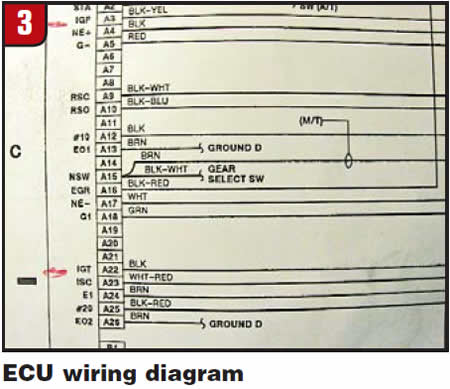
I asked myself, “What can kill spark and injector trigger only while the starter is engaged?” I installed a remote starter to bypass the ignition switch, but the condition still existed. A wire under the dash that went to the ignition switch had been snipped, stripped and twisted together – the result of an alarm system that had been removed. The wires were exposed, but they were not the cause of the problem.
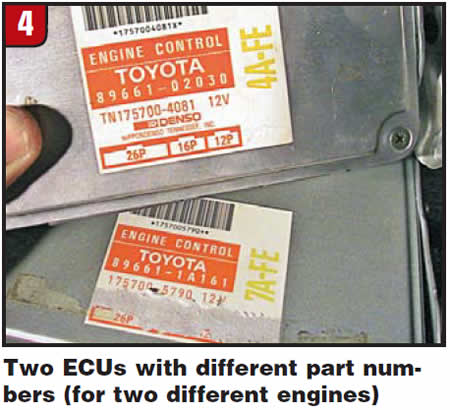
I printed out the wiring diagram for the starting system in an attempt to pinpoint the root cause. The only wire I couldn’t account for was one that went to the ECU to provide a “CRANK” signal. I wondered if the ECU was somehow involved. I printed the ECU diagram to study it for a while, and while I pondered I hooked up my scan tool to look at scan data. The scan tool returned a “NO COMMUNICATION” message, which prompted me to further investigate the in-car ECU.
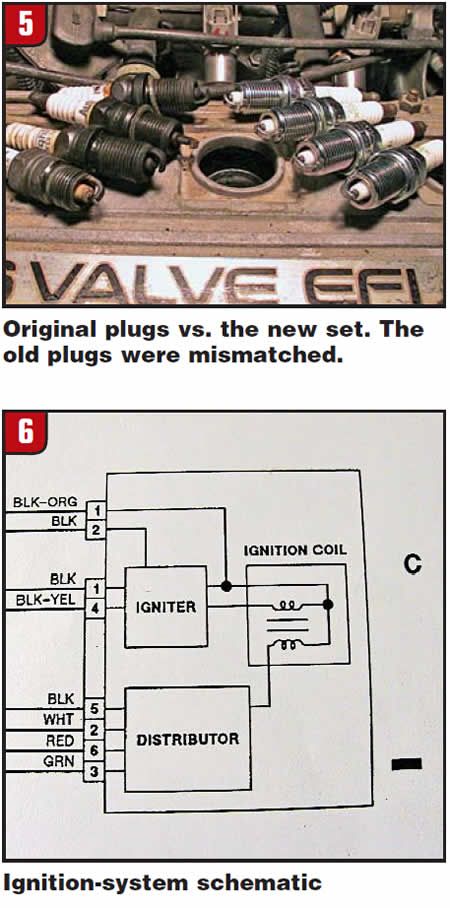
I unbolted it, pulled it out and discovered that the numbers did not match between my two ECUs. I investigated this difference thoroughly, and after comparing the VIN to the ID plate on the engine I discovered that the engine belonged to the car (a relief) and the wrong ECU had been in the car. After I installed a “4A-FE” ECU in the vehicle, the scan tool communicated and showed data stream, although all the parameters looked normal.
At this point, I had data stream, but the no-spark and no-injector-trigger condition still remained. I pulled the wiring schematic for the ignition system and decided to isolate the trigger responsible for these two signals. Using my oscilloscope, I back-probed the two wires that send the two analog signals to the ECU and found a well-formed, consistent waveform.
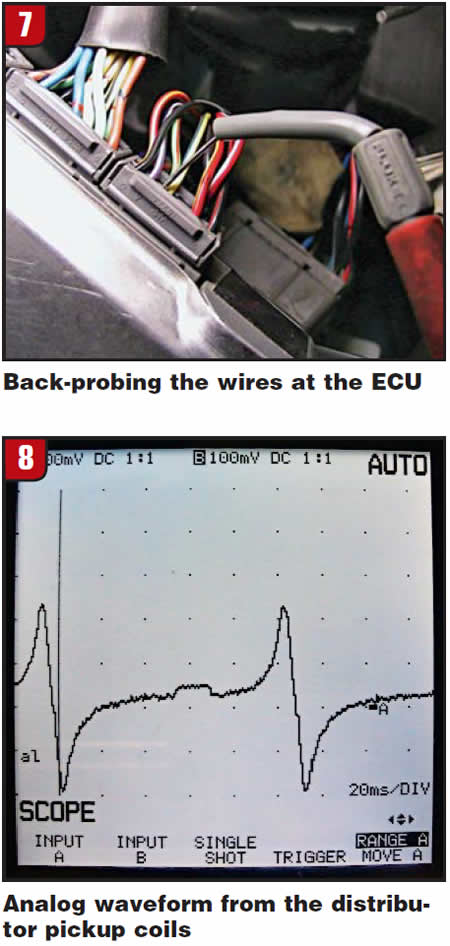
Once I confirmed the integrity of the waveform coming from the distributor, I back-probed the wire that leaves the ECU and triggers the igniter in the distributor. I found no signal from this wire – except briefly – when I first cranked the engine, and when I let off the key I got the same symptoms I saw at the spark plugs and injectors. I now knew that the ECU was not sending the needed signal. But why not?
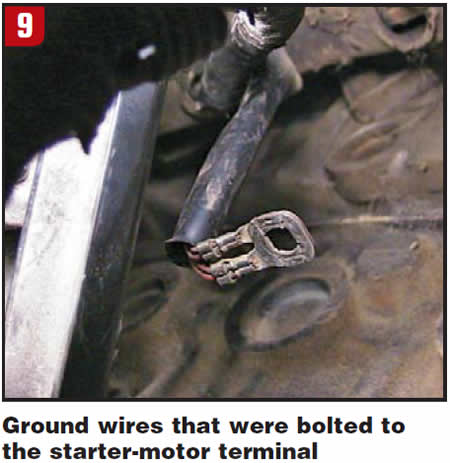
I used the ECU pin chart to test for power and ground wires at the ECU, and that is when I discovered a strange reading. When I tested the two large, brown ground wires for the ECU, my oscilloscope pattern showed 12 volts while cranking! I knew I had a big problem somewhere, so I traced those wires through the firewall and into the engine bay. At this point I was certain a spider had devoured them, and I was careful where I put my hands.
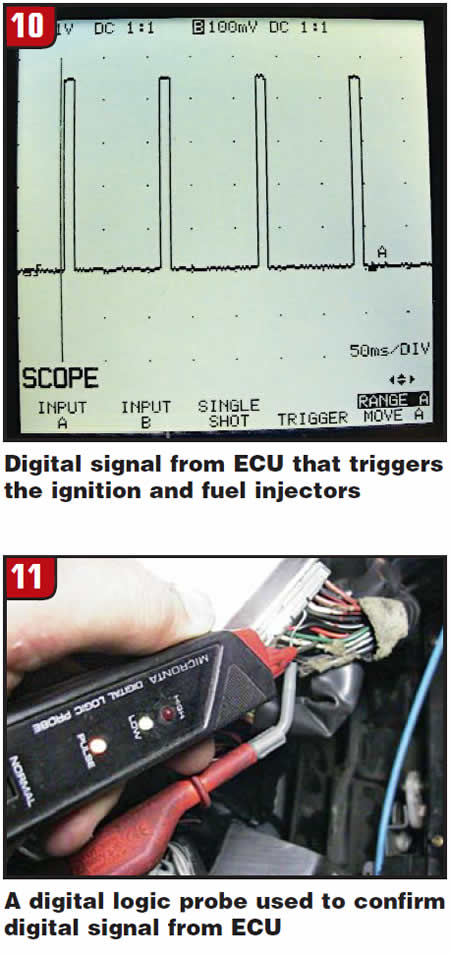
Once I found the termination of the ground wires, I could not believe where they were bolted – not to a clean engine ground but to the motor side of the starter motor! That’s right: When the starter motor was cranked, 12 volts was applied to the ECU ground wires. This explained perfectly why the spark disappeared when the starter was cranked but returned when I let off the key.
Just when you think you’ve seen everything …
Once I moved the ground wires from the starter to a clean engine ground, the ECU gave me a nice digital signal from the ECU to trigger the ignition and fuel injectors, and I had spark and trigger. I confirmed this with my oscilloscope and my digital logic probe, which gives a nice audible and visual signal. I did not, however, have a running vehicle. Further investigation revealed that the fuel pump was not spinning, so I confirmed power and ground, then removed the fuel-pump module. The pump looked like one that had been dormant for a while, and a fresh pump and new fuel brought the engine to life.
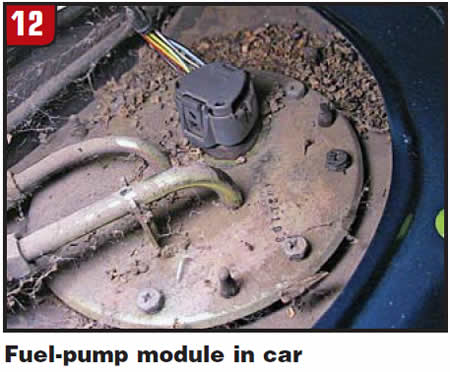
In hindsight, I am happy I had the opportunity to find this once-in-a-lifetime ground-bolted-to-starter issue. I mean, will I ever see this again? At the outset, it seemed that I was overwhelmed with possible causes, since used parts had been swapped, the car had not run for the customer and it had been parked in a field.
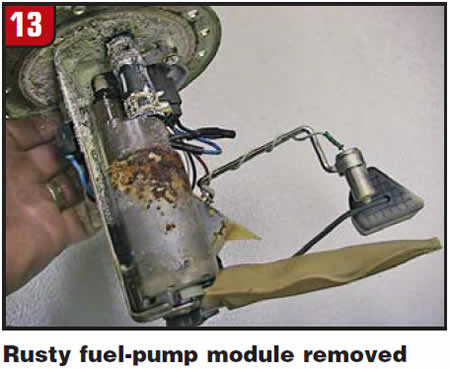
But using some semblance of a logical, systematic, information-gathering process usually will lead us to the root reason for even the strangest cases. I have learned, once more, to trust my waveforms and to never overlook the simple things, especially ground wires.

Brian Manley is a vocational automotive instructor for the Cherry Creek school district in Aurora, Colo. He is an ASE master certified automobile technician and a former member of the National Automotive Technicians Education Foundation (NATEF) board of trustees. He can be reached at [email protected].
This copyrighted article is reprinted with the permission of AutoInc., the official publication of the Automotive Service Association (ASA). To learn more about ASA and its commitment to independent automotive-service and repair professionals, visit www.ASAshop.org or call 800-272-7467.













